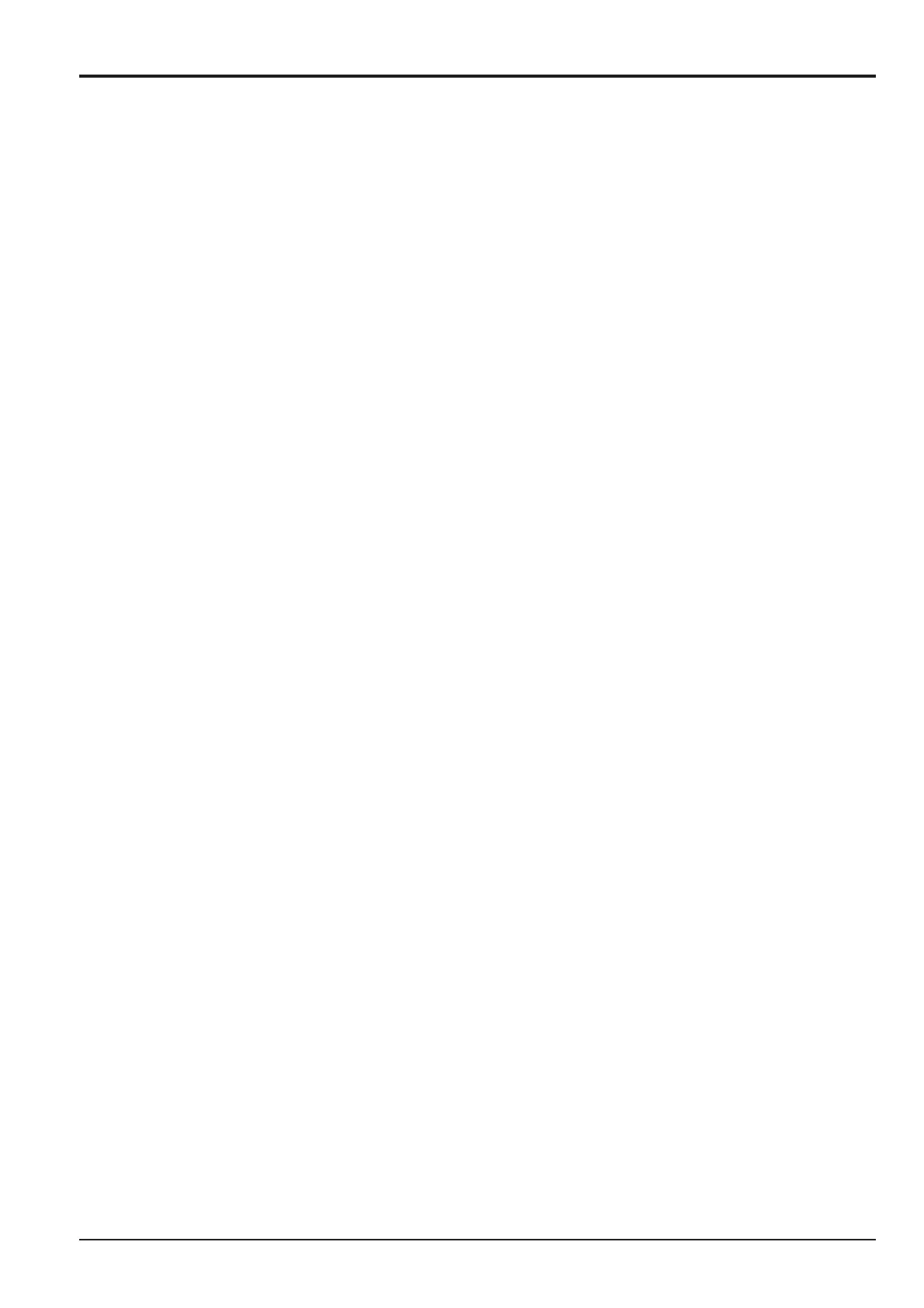40 - 3
Section E
Hydraulics
9803/6400
Section E
40 - 3
Issue 1
Remote Control Valve JS200/JS240
Operation
The structure of the pilot valve is shown in the assembly drawings (see previous page). The pressure reduction valve unit is
built into the vertical bore in the casing.
The pressure reduction unit consists of the spools (201), secondary pressure setting springs (241), return springs (221),
washers 1 (215), spring seats (216) and washers 2 (217). The secondary pressure setting springs are set to give a secondary
pressure of 5~24 kgf/cm 2 (depending on the model). The spools are pressed against the push rods (212) by the return springs.
When the handle is tilted, the push rods are forced down, pushing down the spring seats, to adjust the setting of the secondary
pressure setting springs. An oil inlet (primary) port P and oil outlet (tank) port T are provided in the casing. In addition,
secondary outlet ports 1,2,3 and 4 are situated on the lower surface of the casing.
Basic Functions
The pilot valve controls the stroke and direction, etc. of the control valve spool. This is achieved by providing a spring at one
end of the control valve spool and applying the output pressure of the pilot valve to the other end. (There is also the method
where the pilot valve output pressure is used on both ends of the control valve).
In order to provide this function, the pilot valve consists of the following:
1. Inlet port (P) which is supplied with oil from the pump.
2. A number of outlet ports (1,2,3,4) to supply the pressure from the inlet port to control valve spools.
3. Tank port (T), required to control the pressure output from 2.
4. Spools to connect the outlet ports to the inlet port and tank port.
5. Mechanism, including springs, to control the spools in 4 above.
Functions of the Major Parts
Oil supplied by the hydraulic pump is received by P port and the function of the spool (201) is to switch the pressurised oil from
the inlet port P to the output port (1, 2, 3, 4) or alternatively, from the output port to the tank port (T). The springs (241) act on
the spools and determine each outlet pressure. The push rods (212) are able to slide in the plugs (211) to adjust the
compression of the springs. The handle acts through the disk (302) and adjusting nut (312) to move the push rods. The handle
is able to rotate a full circle around the joint (301).
The springs (221) operate against the casing (101) and the spring seats (216) act, regardless of the outlet pressure, to return
the push rods to their natural position, thus ensuring that the spools return to their neutral position. This spring also provides a
resistive force which gives the controls a suitable "feel" to the operator.

